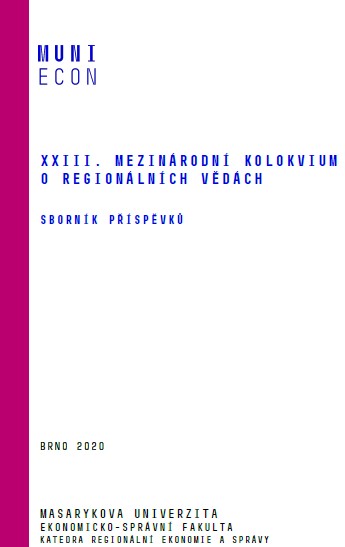VESNICE JAKO SPONTÁNNĚ VZNIKLÁ BIOCENTRA A ZÁSOBNÍKY BIODIVERZITY V SOUČASNÉ ČESKÉ ZEMĚDĚLSKÉ KRAJINĚ
VILLAGE AS SPONTANEOUSLY DEVELOPED BIOCENTERS AND RESERVOIRS OF BIODIVERSITY IN CONTEMPORARY CZECH RURAL LANDSCAPE
Author(s): MICHAEL PONDĚLÍČEK, VLADIMÍRA ŠILHÁNKOVÁ
Subject(s): Environmental Geography, Rural and urban sociology
Published by: Masarykova univerzita nakladatelství
Keywords: village; countryside; biocenter; biodiversity;
Summary/Abstract: Villages and their functions in the landscape have changed significantly, and the 21st century has brought with it a number of problems in the functioning of village settlements and the rural landscape. The aim of the paper is to analyze the role of the current village in the landscape and biodiversity in the landscape and to outline the possibilities of its functioning in this system and its further development. The work is processed mainly by means of the method of terrain and local surveys. The analysis shows that throughout the 20th century the possibilities of animal and plant move in the landscape decreased and diversity in the form of gardens, cemeteries, parks and other green formations was concentrated in settlements and their immediate vicinity. Contemporary villages and smaller towns have already had a relatively stabilized strip of greenery around them, which was created together with ensuring a quality environment (e.g., soundproofing or sun elimination). This, on the other hand, allowed animals that had not been common in settlements to move into villages. To our surprise, the villages become a treasure trove of biodiversity and the preservation of fragments of important habitats from previous stages of development. The care of intra-settlement greenery thus faces a new, as yet unknown, task - how to maintain and further develop this newly created biodiversity.
Book: XXIII. mezinárodní kolokvium o regionálních vědách: Sborník příspěvků
- Page Range: 554-560
- Page Count: 7
- Publication Year: 2020
- Language: Czech
- Content File-PDF

